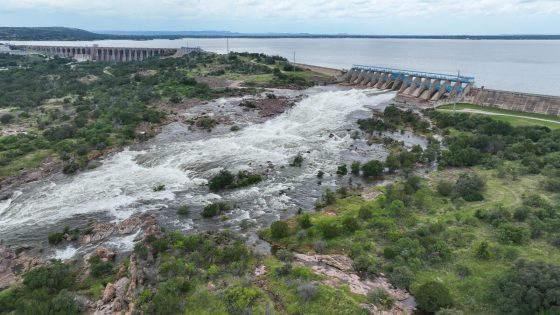Austin is experiencing a remarkable turnaround as its drought-stricken water reservoirs rise to levels not seen in years. The Lower Colorado River Authority recently opened four floodgates on Lake Buchanan for the first time since 2019, a significant move that reflects the dramatic shift in water conditions. This change comes just after a long dry spell, illustrating the unpredictable nature of Texas weather.
- Austin's water reservoirs are rising significantly.
- Historical droughts followed by major floods.
- Floodgates opened for first time since 2019.
- Reservoirs prevent devastating flooding in Austin.
- Local creeks cause recent deadly floods.
- Flood storage capacity remains available at Lake Travis.
Experts note that such fluctuations between drought and flood are not uncommon in the region. “Historically, we go through lengthy drought periods that are then broken by significant major flood events,” said John Hofmann, executive vice president for water at the Lower Colorado River Authority. As of 2025-07-16 21:21:00, the reservoirs are not only replenishing water supplies but also preventing more severe flooding.
This rapid change raises questions about the future of flood management in Austin. Can the current infrastructure handle extreme weather events? Experts warn that while the reservoirs are currently effective, the potential for catastrophic flooding remains. Key points include:
- Reservoirs have historically prevented devastating floods.
- Current systems are crucial for managing rapid water flow.
- Future storms could overwhelm existing infrastructure.
- Monitoring systems play a vital role in flood risk management.
As Austin navigates these shifting water levels, proactive measures and community awareness will be crucial in preparing for future weather extremes. Will we be ready for the next storm?
































